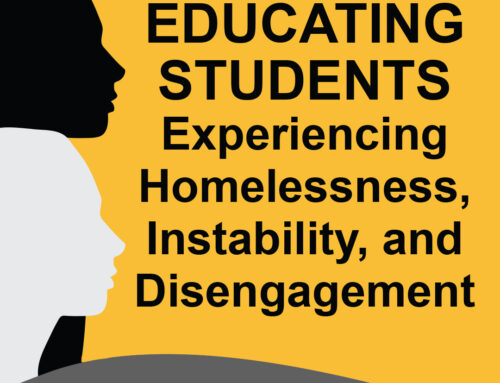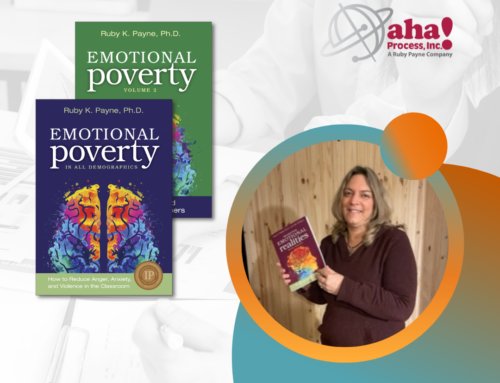By Ruby K. Payne. Part 1 of 2
As published in Middle Ground Magazine.
Copyright © 2013 Association for Middle Level Education
Do any of your students repeatedly misbehave despite the fact that you give consequences time after time?
Are any of your students prone to avoiding their work?
Sometimes we need to approach these kinds of problems as emotional issues rather than discipline issues.
It’s impossible to talk about behavior and learning without talking about emotion. In fact, all learning is double-coded with emotion codes and cognitive codes, according to Stanley Greenspan and Beryl Benderly in The Growth of the Mind and the Endangered Origins of Intelligence.
Think back to a teacher you had in school whom you didn’t like. Chances are, your dislike for the teacher spilled over into a dislike for the subject the teacher taught.
Because you didn’t like the subject, you probably didn’t work to your potential in that class. Because emotion is linked to learning, it’s important to understand it. Emotion is based on safety and belonging. When a student is upset, it is likely because of an issue that is related to safety or belonging or both.
Early Emotional Memories
Prior to the age of 9 or 10, we tend to store our emotional experiences in the amygdala section of the brain. The amygdala has a fascinating memory pattern: It has a long-term memory for the feeling but a short-term memory for the incident. So we may know how we feel about something, like a person or place, but we may not know why we feel that way. Our brain stored the emotion connected to that person or place, but not the incident that prompted the emotion. We remembered how certain people made us feel and tended toward similar patterns of behavior around those people because those patterns were comfortable to us.
Furthermore, research by Mary Ainsworth and John Bowlby suggests that bonding and attachment—two elements of our emotions—affect our interactions with others and our beliefs about ourselves. As described in their 1991 American Psychologist article, “An Ethological Approach to Personality Development,” they put a young child and parent in a room and then asked the parent to leave. If the child was content to explore the room without the adult present, the child was considered to have a secure attachment and a secure emotional foundation. If the child
stared anxiously at the door, cried for the parent, or wouldn’t explore the room, the child was deemed anxious or avoidant—without a secure emotional foundation.
These styles (secure, anxious, and avoidant) continue to follow many of us throughout school and into adulthood. For example, an emotional attachment affects our willingness to work hard, attitude about making mistakes, willingness to stand up to a bully, or even willingness to participate in class discussions. Because emotional attachment is different from child to child, it is imperative that schools be safe, inclusive places emotionally.
Come back for the second part of this article next Thursday!
Ruby K. Payne is a career educator, author, and founder of aha! Process, Inc. (www.ahaprocess.com). Her efforts to address the needs of under-resourced learners include dozens of publications and other media, as well as training programs that have served hundreds of thousands of educators at all levels. Her most recent book is From Understanding Poverty to Developing Human Capacity.
http://www.amle.org/Publications/MiddleGround/Articles/February2013/Article3/tabid/2800/Default.aspx








